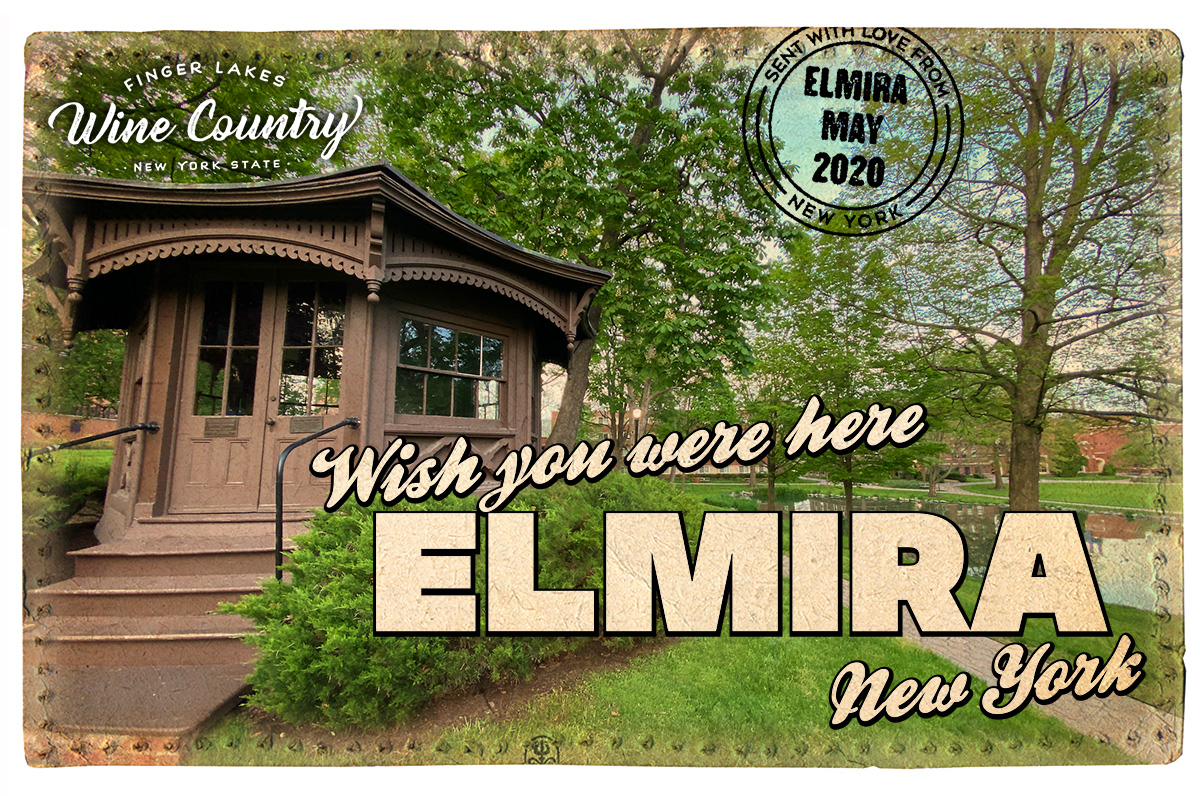
Mark Twain Country
One of the most famous figures in American literature, Samuel Clemens, better known by his pen name Mark Twain, spent his summers in Elmira for more than 20 years. Learn more when you visit the Mark Twain Study and Exhibit on the beautiful campus of Elmira College. Twain spent his summers in Elmira and where he penned some of his most famous pieces of literature in the octagonal study, including The Adventures of Tom Sawyer and The Adventures of Huckleberry Finn, Life on the Mississippi, and A Connecticut Yankee in King Arthur’s Court.
Elmira’s Storied Past
Learn more about Twain’s time in Elmira and the area’s history when you visit the Chemung Valley History Museum. Just down the road is the Elmira Civil War Prison Camp. Dubbed “Hellmira” for its high death rate, the Confederate prison camp has been reconstructed, along with barracks that were created with the aid of original drawings and photos. The prisons were buried by a formerly enslaved man named John W. Jones. As sexton for Woodlawn Cemetery, one of John W. Jones’ primary roles was to bury each deceased Confederate soldier from the Elmira Prison Camp. Of the 2,973 prisoners who Jones buried, only seven are listed as unknown. Jones kept such precise records that on December 7, 1877, the federal government declared the burial site a national cemetery. Jones was an active agent in the Underground Railroad and aided in the escape of 800 freedom seekers. Learn more when you visit the John W. Jones Museum.
Arnot Art Museum
The Arnot Art Museum houses a permanent collection of 17th-19th century European paintings, 20th-century American art, and contemporary art from the 21st century. Located in a historic Greek-Revival mansion from 1833, the Arnot Art Museum was founded by local banker Matthias Hallenback Arnot, who gifted his collection, home, and endowment to Elmira in 1910. The Arnot Art Museum opened to the public in 1913, and since that time, the Museum has grown to become one of the leading cultural institutions in the region.
Broadway Features at the Clemens Center
Just because you love vacationing in small towns does not mean you must forego the Broadway hits and performances of the big city. Not only does the Clemens Center (recognize that Clemens name?) host celebrated orchestras, comedy shows, and dance performances, but it also features award-winning and highly coveted theatrical performances through their Broadway Series collection. In the heart of downtown Elmira, set the stage for a beautiful night with dinner or drinks in town, followed by an unforgettable show in the Clemens Center’s historic and breathtaking performance space.
The Serene Chemung Rivers
Take in the breathtaking views of the Chemung River, a tributary of the Susquehanna River that was used as a famous trade route between Native Americans and settlers. During warmer months, the river is perfect for a day of kayaking.
Tanglewood Nature Center
Tanglewood Nature Center and Museum offers visitors free access to over 10 miles of hiking trails, exhibits, and environmental education programs. The center also houses over 40 live animals, both native and exotic. The Center is committed to local preservation efforts.
Soaring in the Sky
Witness the beauty of the Chemung Valley from a bird’s eye view while riding as a passenger in a motorless glider plane with Harris Hill Soaring Corporation. Be sure to stop at the National Soaring Museum to view the beautiful, finely crafted sailplanes that trace the history of motorless flight from its founding in the 1930s on Harris Hill to the present-day gliding, along with many other aviation artifacts.
Views and Great Food at the Hill Top Inn
Take in a glorious sunset over the Chemung Valley from this historic restaurant and inn. Established in 1933 on the top of Jerusalem Hill, Hill Top Inn is situated on the knoll where Samuel Clemens visualized many of his most famous works. Today, the perspective from Hill Top Inn is often referred to as “the view that inspired Mark Twain.”